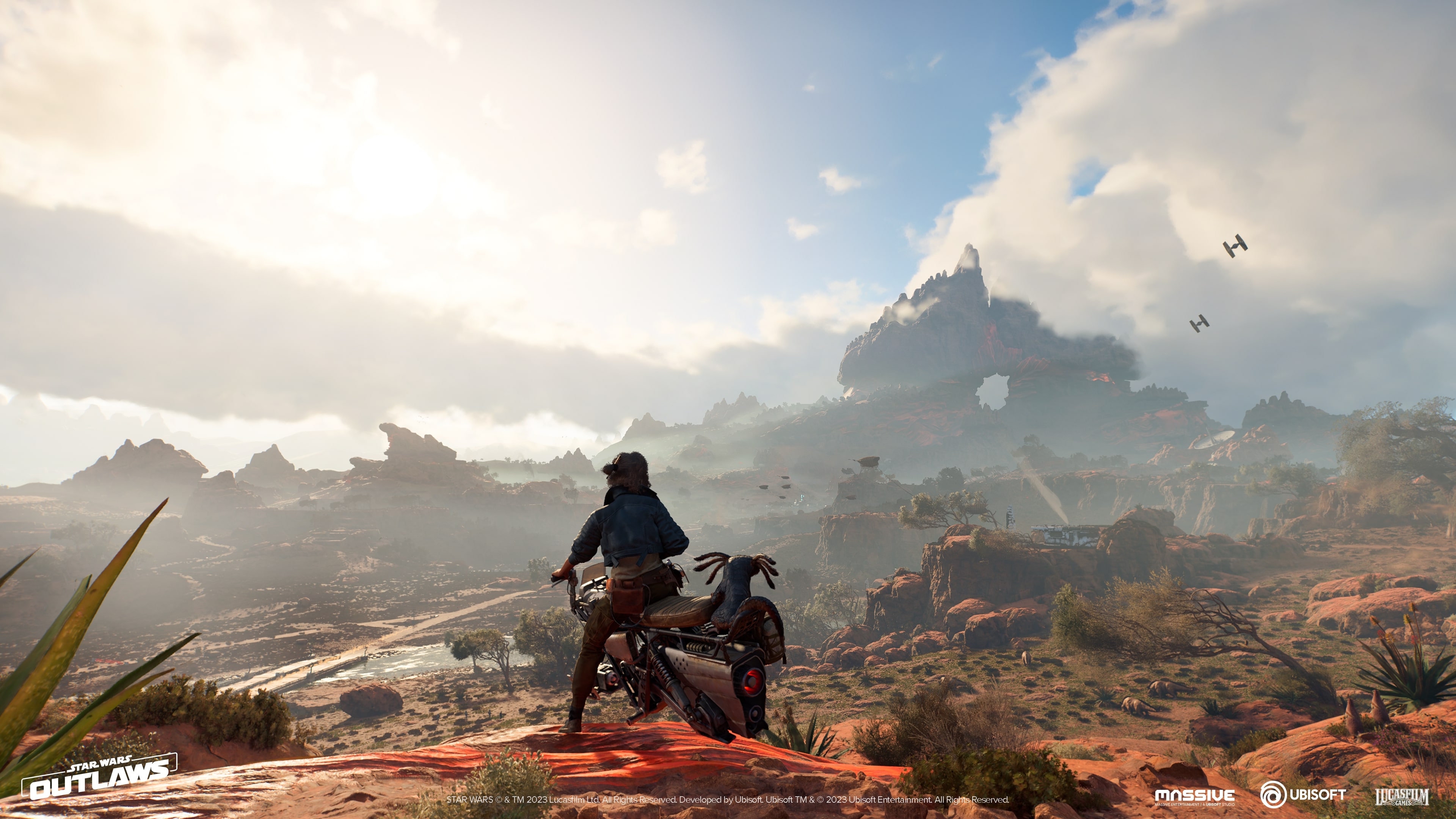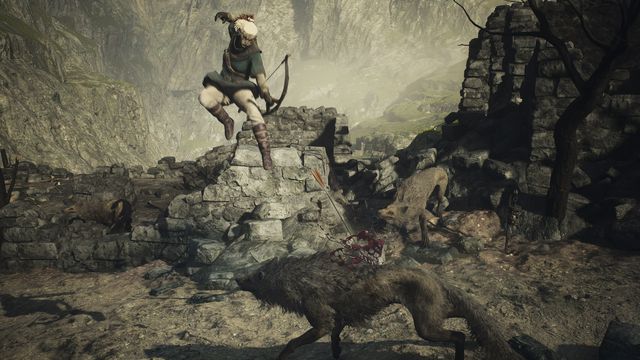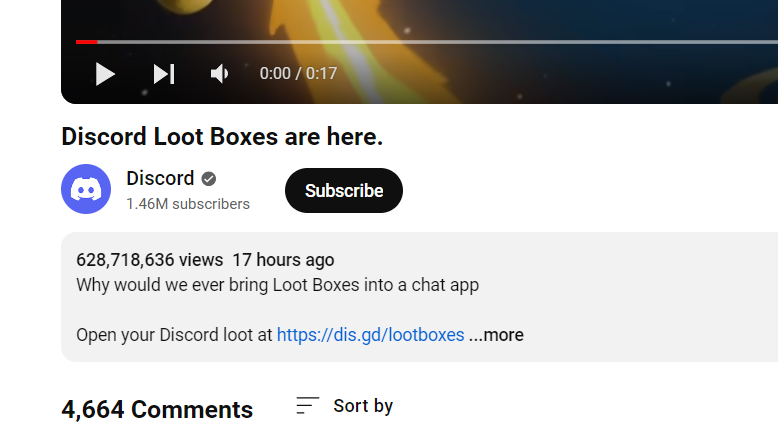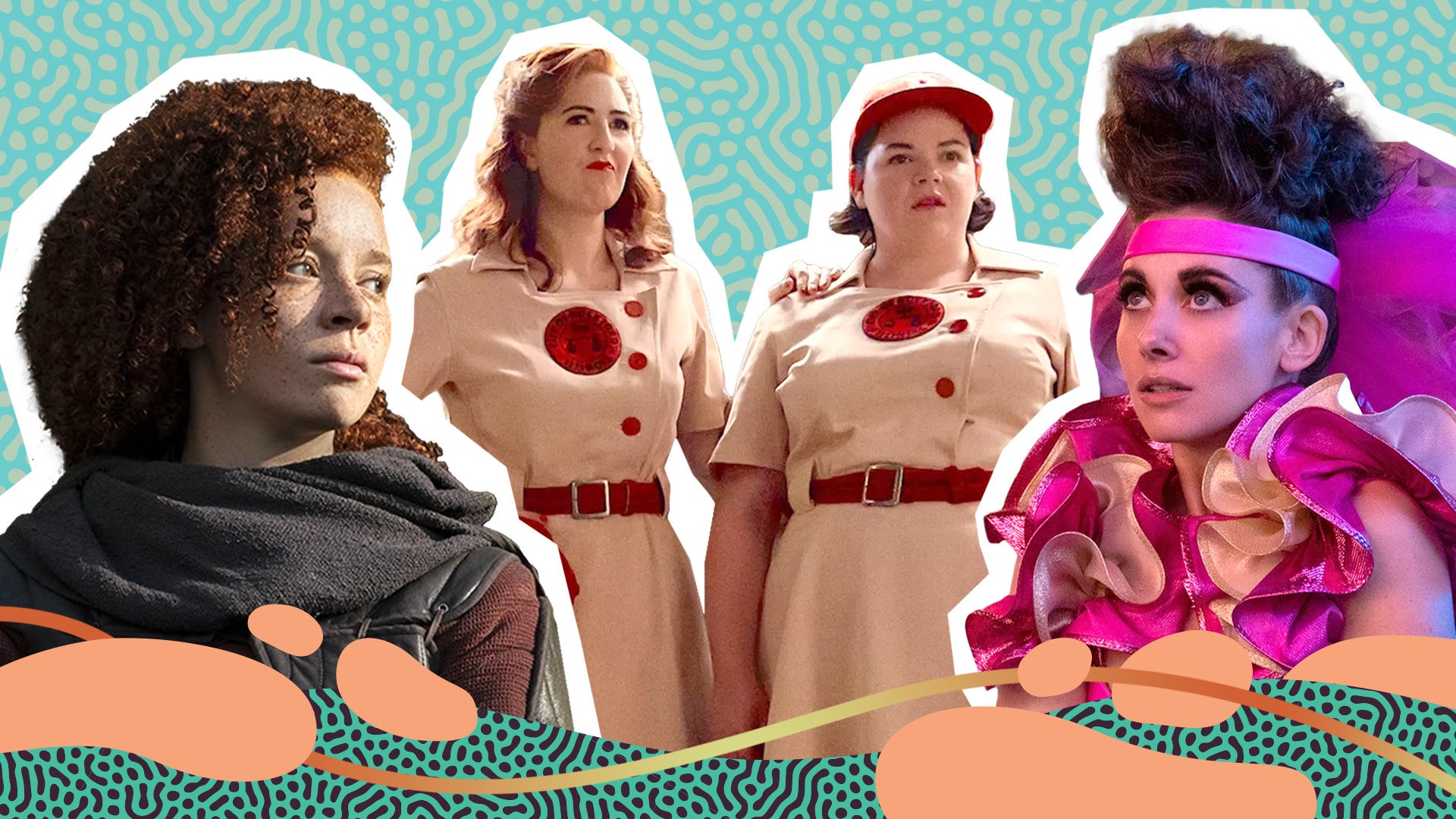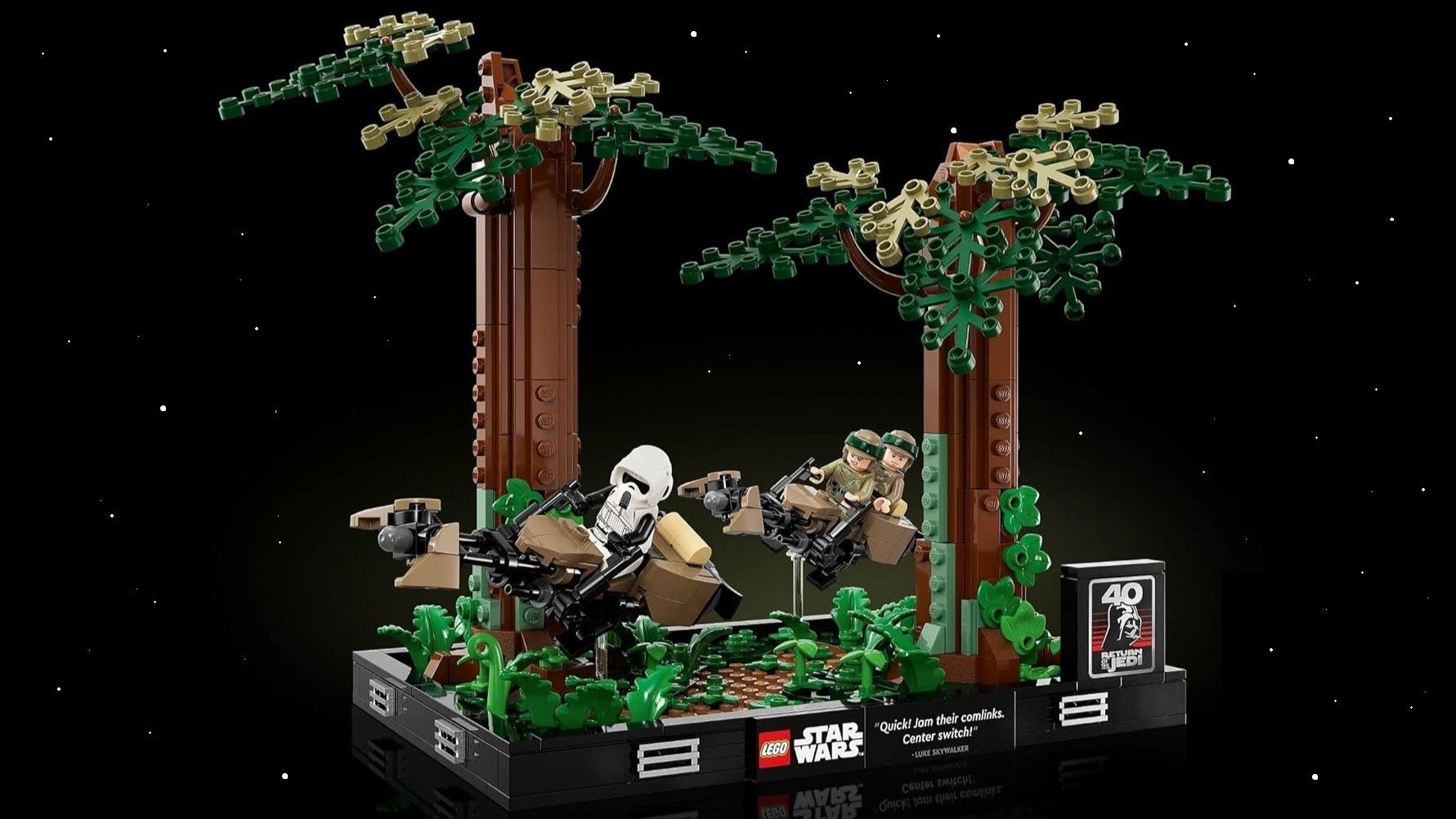
I’ve been primed, lately, to ask a question that feels important to understanding Star Wars Outlaws, and it’s this: What is Star Wars, really? What is the core essence, the Star Wars-ness, of the grand dame of the space opera genre?
Disney’s streaming shows set in the Star Wars universe — Andor in particular — have made me wonder this. I’m a sucker for a Jedi story; the Force is one of the things that interests me most about this universe, but I found Obi-Wan Kenobi, The Acolyte, and Ahsoka to be very mid shows. Andor I really enjoyed, but is it Star Wars, really? Or is it just in Star Wars’ setting, and thus becomes it by association?
You may be wondering what the hell this has to do with Star Wars Outlaws, and it’s this: The game itself, thanks to well-worn underlying gameplay structures, is a very standard 3D open-world action-adventure game. I’m about 15 hours in so far, and what I’ve seen has mostly been well executed; the game plays smoothly, but because this is well-tread territory. Stealth, silent takedowns, gunfights, racing across the [biome here] on a [choose one: car, horse, robot version of a horse] is stuff you’ve done before.
So the real question for me, as I sat down to play Outlaws, was: Is this world Star Wars? How much I was going to enjoy it felt dependent on the answer. If the world was convincing, compelling, and interesting — if the Star Wars dial was turned to the exact right spot — then just as with Andor, the game would probably land. Perhaps more importantly, that Star Wars dial being tuned correctly would keep me going when the exhaustion or frustration inherent to these by now de rigueur open-world frameworks might instead have made me pause or even walk away.

My time with Outlaws so far has taken me to the game’s big opening-up point: fixing the hyperdrive on main character Kay’s stolen spaceship Trailblazer, acquiring the acerbic droid ND-5 as co-pilot and companion, and setting off to multiple planets in service of putting a band together to pull off the heist of the century at the behest of mysterious crime-lord-slash-benefactor Jaylen.
It’s no mean feat reaching that point, either. After the game’s tutorial-esque intro sequences, Kay and her pet/partner (and the game’s unofficial mascot character), the salamander-like Nix, crash-land on the savanna moon of Toshara. With the Trailblazer out of commission, and Toshara in the grip of an Imperial occupation and multiple competing crime syndicates, there’s a lot of work to be done before earning that final fix for the hyperdrive, which kicks off the game in earnest.
Kay Vess herself is perhaps the first “Is this Star Wars?” axis to consider. Our hero is a scrappy underdog from casino planet Cantonica (home of The Last Jedi‘s oft-derided Canto Bight), where the game begins. She’s a petty criminal living in the attic of a bar and dreaming of getting off-world and reaching the urban center of the galaxy to pull off the “big score” she’s sure she can manage. Much like the template for the Star Wars scoundrel Han Solo, she’s living on her wits, guile, and occasionally putting a blaster bolt in someone’s face.

At first, I didn’t really like Kay that much. She was fine, but she also felt too reserved, even laconic, for a scoundrel brat clearly in over her head. I wondered if this was an attempt to deliberately keep her from becoming Legally Distinct Lady Han Solo; would a Kay who either constantly cracked wise, or tried to charm her way out of every problem, make her seem too derivative? As the game progresses and she starts to climb out of the bad decisions and hopeless-seeming situations at the game’s start, her actual personality and growing self-confidence start to stand out more. ND-5, once he joins up, provides a useful foil; he’s the now-archetypal “droid who hates humans, apparently” character, but it’s a good contrast that shows off some of Kay’s wry humor and make-lemons-from-lemonade approach. The game’s meat appears to be built around putting together a team of experts, and I can only hope that once she has more people to play off of (and more opportunities for her to grow and learn), Kay’s personality will refine and stand out even more.
Her situation, however, does point to another critical “Is it Star Wars?” axis: Everyday life in the Star Wars universe, for people outside the big planetwide cities of the Core Worlds, is hard, often brutish, and sometimes just freakin’ capricious. Much like real life, wealth disparity that keeps the working class thoroughly under the eternal heel of the rich, as well as a police state (in the form of the Empire) that is primarily interested in keeping itself in power, combine to create the very situation Kay finds herself in at the game’s start: stuck in Canto Bight, resorting to petty crime and dreaming of hitting it big.
This setup results in the galaxy that we see: survivors and people getting by who are stuck in crowded, noisy, dangerous cities or living in isolated shacks and watering holes in the middle of sometimes deeply inhospitable places. Buildings in the game’s towns and cities are often full of random, miscellaneous junk, the space equivalent of “truck up on blocks in the yard.” Closets with crafting item pickups might have a ton of random, aging equipment lying around as set dressing; at one point, I went through a ship stealer’s cave and, behind a rock, found an alcove full of decommissioned or broken 3PO droids in what was simultaneously the funniest yet creepiest moment of the game to that point.

Outlaws presents the Star Wars universe in a way that stories about heroic rebels or lightsaber-swinging Jedi often can’t: at the level of, and through the eyes of, common people living in the equivalent of broken-down former industrial towns in inhospitable backwaters. I’m not as thoroughly versed in the Lore™ as many SW fans, but I think Massive Entertainment has done an excellent job recreating the “feel” of these types of locations from the films and shows. Mos Eisley looks and feels exactly how I’d imagine it would, based on A New Hope: a ridiculous, twisty maze of adobe-ish domes, doors leading to dark and crowded bars and shops full of purse-clutchingly suspicious or aggressive-looking aliens who would gladly shoot you and walk out with your shit in a bag if it weren’t for the stormtroopers keeping a watchful eye on the peace.
As she travels, Kay develops her abilities as a scoundrel and criminal by finding Mentors, and gets work by making connections with Brokers. Although their story role is often limited and focused around unlocking them, a few of these have become some of my favorite NPCs in the game. The first Broker to give Kay work on Toshara is Danka, a Mon Calamari with smoker’s lung and plenty of acerbic one-liners about learning the ropes. Kay learns to improve her hacking “slicing” from Aila Bren, a middle-aged woman who gets stuck in an Imperial base after a job goes wrong and who needs Kay’s help to break out before promptly stealing an Imperial shuttle, saying “I hate this planet,” and flying off into the sunset.
Mentors typically require a quest to unlock, complete with story complications and baked-in world-building; getting your speeder bike upgraded involves learning about the local economic troubles of Tosharans, for example. However, I often left those quests wishing I had more interaction or story to go along with the small amount I got. Still, quirky side characters that make things interesting are another decidedly Star Wars-y trait, no matter what people think about Dex and his diner (bad news for the haters: Outlaws not only has diners, but the equivalent of gas stations outside them for speeders as well, a fact I adored but which feels tailor-made to annoy a certain subset of SW fans).

All in all, the narrative layer of Star Wars-ness in Outlaws hits its marks. If the reason you want to play this game is to hang out and explore some open-world Star Wars locations, and meet a bunch of Star Wars-y characters, and play as someone who is at least Han Solo-esque, then Outlaws will scratch that itch.
Remember what I said about annoyances, however? The game is not without them, or without bugs that Massive will need to smooth out. The game hard-locked my PS5 twice in as many days, which isn’t a good sign, and I once got killed while using the “adrenaline rush” bullet time slowdown that Kay can deploy in combat; the result was that I “lived” in a monochrome world where sound and motion continued, but I was totally immobile (and needed to reset the game).
The game’s controls feel fine and do the job for the most part, but one of the more critical and commonly used game mechanics — controlling Kay’s partner, space lizard Nix — could be both very finicky and sometimes a little confusing. Nix can open doors, steal small items, distract nearby guards by playing dead, and perform a number of other tasks. Distracting guards is perhaps the most common, but the UI to do it often requires trying to use the right stick to curve the camera in such a way that he can be placed properly, which did not feel great.
Erratic checkpointing and a number of “Did you get seen? MISSION FAILED”-style quests meant a lot of replaying in the early game while I learned the systems better or made stealth attempts that fell apart for some reason or another. Moments where Kay has to fight her way out haven’t been numerous so far, but they are often a little bit annoying; it’s clear the game’s got much more emphasis on Kay’s stealth tools than her combat tricks, early on.

There have been some moments when the slow pace of stealth gameplay made me opt for a “going loud” solve instead, but a lot of those situations simply turned into my dead body on the ground as enemies dropped out of the sky like angry hornets. It’s really a shame; I get why the game would deemphasize straight-up blaster brawls versus using trickery or stealth, but coming back to Han as an archetypal mold from which Kay was partially cast: Occasionally, he shot first. It may be that with later upgrades to her blaster, and finding the right Mentor, blaster combat will feel less like a death sentence compared to stealth, but early on, that wasn’t the case.
Fans and critics heading into this game have wondered if it would feel “checklist-y” in the way that most Ubisoft open-world games do. I’ll grant that the world map isn’t a sea of icons to be checked off in the way a Far Cry game’s might be, but when the time came to leave Toshara and start in on the game’s “main quest,” my journal was still full to the brim of… well, stuff to check off on a list. Treasure spots, complete with little treasure chest icons to indicate if you’ve opened them all. Lists of intel to be gathered and locations to be scouted, and so on, and so on. I will give the game credit for not aggressively shoving them in my face, but I have my doubts that this is an effective long-term strategy for keeping good old Open-World Fatigue at bay.
It’s worth noting that this not-quite-a-review is based on the game’s opening hours. Some of these rougher spots might be smoothed out with more time or progress, but the flaws of the open-world design are not necessarily due to Massive’s team doing anything wrong; they’re more just inevitable consequences of the form. It’s hard not to see Outlaws, at least a little bit, as The Elder Scrolls: Tatooine Edition in some ways: Here’s a big, cohesive space with a bunch of big story threads and about 10 hojillion small ones. All that was really needed was a stormtrooper complaining about taking a blaster bolt to the knee. (Blessedly that hasn’t happened, because if it had, this review would have a lot more F-bombs in it, I assure you.)
It’s good that Outlaws sticks the landing on the Star Wars-iness of its world and its characters, for that reason. It truly feels like the game’s only real unique selling proposition in a market full of other games doing similar stuff (and live service games that not only do similar stuff, but want you to keep coming back to do it every day). As far as these things go, “it’s a bit like a playable Solo” could be a lot worse. Whether or not the game will fully deliver on its promise, and if Kay Vess becomes her own distinct star in the SW firmament, however, is still up in the air.
Star Wars Outlaws will be released Aug. 30 on PlayStation 5, Windows, and Xbox Series X. The game was reviewed on PlayStation 5 using a pre-release download code provided by Ubisoft. Vox Media has affiliate partnerships. These do not influence editorial content, though Vox Media may earn commissions for products purchased via affiliate links. You can find additional information about Polygon’s ethics policy here.
Source:https://www.polygon.com/star-wars/443727/star-wars-outlaws-proves-you-can-still-be-star-wars-without-the-jedi